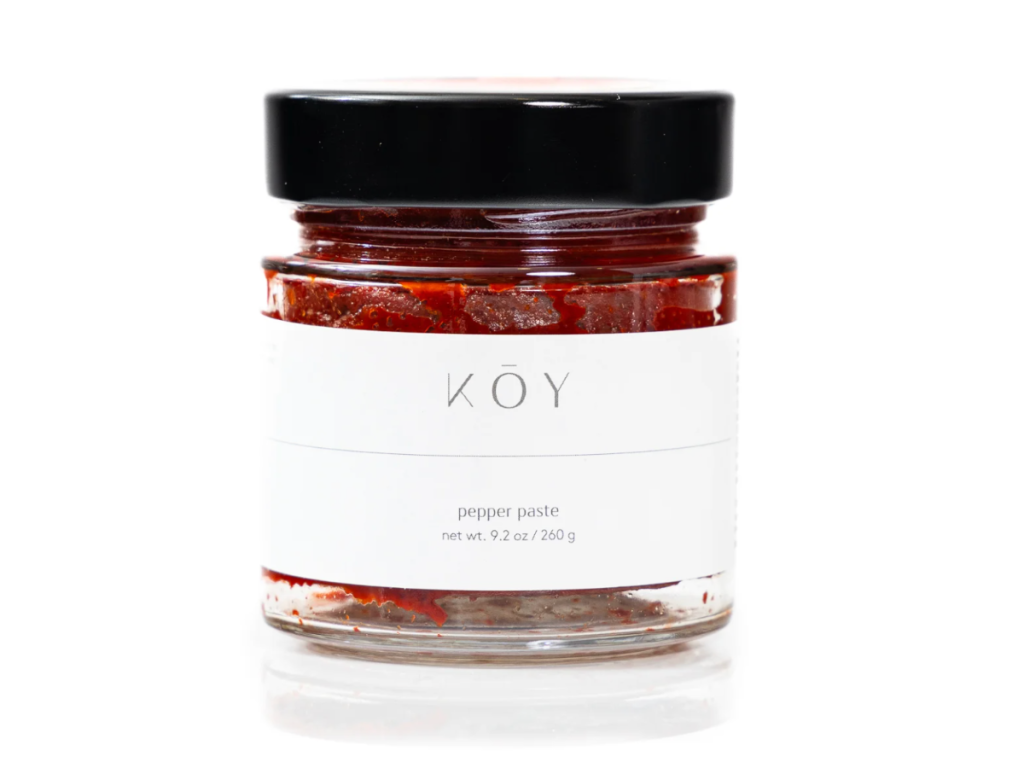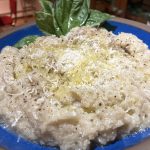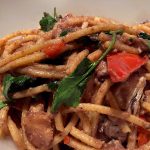Excerpt from Ari’s Top 5 enews
Spectacular new spread on the shelves at the Deli

Every once in a while we bring in a new ingredient that I consider a culinary game-changer. Something that you can add to a wide array of other dishes that will meaningfully enhance the dish without taking over. An ingredient that contributes to your cooking in a way that adding a great fiddle player to an already good band, or a great sixth player to a really fine basketball team makes what was already good, just a bit better! The amazing IASA Peperoncino from the Italian town of Cetara is one of them. You might have noticed how much it’s showing up all over the Zingerman’s Community of Businesses—six months or so after its debut, you can find it all over the Roadhouse menus, as well as the shelves at the Creamery and Deli!
Now we’ve got another one of these fantastic ingredients—a dense, intense, not spicy, sweet pepper paste from Turkey! In Turkish, the paste is known as biber salcasi. “Biber” means pepper. On Exploring the Turkish Kitchen, Christa Eker calls it “a fundamental part of southern Turkish cooking,” Making the paste, she reports, “requires plenty of babysitting so needs to be done when time can be spent on it but it[’s] well worth time and money.” In Turkey, it’s a staple. In the U.S., it’s pretty much been a secret! Our source for this special sauce is Koy Pantry, whose work is led by Serdar Sinaci. I’ll let him explain in his own words:
Our Turkish pepper paste is a wonderful condiment that’s been used in Anatolian cuisine for hundreds of years. The southeastern region of Turkey, more specifically, Antakya and Gaziantep regions, specializes in this variety of peppers where there are optimal growing conditions, dry, hot summer months, and fertile soil. For generations, it was a way to preserve the season’s bounty similar to many food items we’ve come to love and enjoy.
Our producer in Antakya uses their own sweet Kapya peppers. The peppers are seeded and stemmed and lightly salted, then left to be cured in the hot sun which causes some fermentation to occur giving the pepper paste a slightly bitter, vegetal flavor. The semi-cured peppers are cooked into a spreadable paste, and salt is added when they are curing. The finished paste is similar in texture to Italian estratto di pomodoro. You can add a spoonful or two to pasta sauces, soups, stews, and sautéed vegetables. I’ve been spreading some on toasted Bakehouse bread that’s first been drizzled with olive oil. The other night, I added a tablespoon of it to olive oil, mixed well with a fork, and then fried some eggs in it! Excellent! Other thoughts? Serdar says:
Pepper paste is a commonly used ingredient in most Anatolian cuisine, in most cases, pepper and tomato paste are used together to add umami to dishes. Given that ours is a sweet version, you’re not adding heat when using, but rather a depth of flavor. A tablespoon can elevate soups, sauces, and stews, and be incorporated into a marinade for meats and vegetables. Similar to browning tomato paste in some sort of fat, pepper paste turns into an intensely flavorful ingredient when cooked down a bit with olive oil or butter. … Although not the same, I typically suggest thinking about it in the same way you would use gochujang or harissa. I love to mix it with olive oil, tomato paste, yogurt, and fresh garlic for a wonderful marinade for chicken or lamb. It’s also great in kofte, Turkish-style meatballs!
Sunday night I sautéed some great carrots from Tantré Farm in olive oil until they had softened some. I added a generous spoonful of the pepper paste and a little water to thin it, then braised the whole thing (covered) for about 10 minutes. I sprinkled on a bit of crumbled feta and some of the wild cumin we have from Uzbekistan at the Deli. Easy, excellent, and only the beginning of what is possible with this special new arrival.



